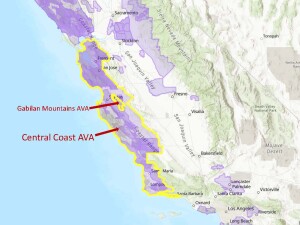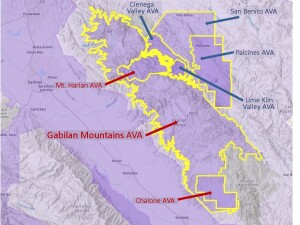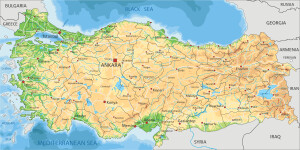On August 15 (2022), the TTB (Alcohol and Tobacco Tax and Trade Bureau) of the United States announced the approval of the Gabilan Mountains American Viticultural Area (AVA). The new AVA is located entirely within the existing Central Coast AVA, slightly inland from the town of Salinas—and covering portions of Monterey and San Benito Counties.
The Gabilan Mountains AVA surrounds the existing Mt. Harlan and Chalone AVAs and is located adjacent/just slightly west of the San Benito, Paicines, Cienega Valley, and Lime Kiln Valley AVAs. The status of these AVAs will not change.
According to the original petition—written by Parker Allen of Coastview Vineyards and originally submitted in 2018—the distinguishing features of the Gabilan Mountains AVA include its elevation, climate, and soils—as described below.
-
Elevation: The Gabilan Mountains AVA is located in a mountainous region that places it at a significantly higher elevation than the surrounding areas. The average elevation within the AVA is 2,370 feet—above the heavy fog and marine layer that often affects other regions in the vicinity.
- Climate: The Gabilan Mountains AVA has an overall cool climate. However, as previously mentioned, the Gabilan Mountains AVA has significantly less fog and cloud cover—and therefore more sunshine—than the surrounding areas. It also receives more rainfall by comparison; the area within the Gabilan Mountains AVA receives an average of 17.24 inches of rain per year (with over 12 of these received during the fall and winter months). By contrast, the area to the north receives 14.19 inches per year; the area just to the south receives just over 12 inches annually.
- Soils: The soils of the Gabilan Mountains AVA are described as moderately coarse in texture, rich in calcium due to high limestone content, and supported by granite bedrock. These quick-draining soils are renowned for their ability to stress the vines during the growing season, resulting in thick-skinned, flavorful grapes. By contrast, the surrounding areas contain more find-to-medium textured alluvial soils, the result of past floods.
When the Gabilan Mountains AVA is brought into force—on September 14, 2022—the total number of AVAs in the United States will be 267; of these, 147 will be in California.
Welcome to the world, Gabilan Mountains AVA!
References/for more information:
- Establishment of the Galilan Mountains AVA-Federal Register
- Petition to Establish the Gabilan Mountains AVA-May 2018
Post authored by Jane A. Nickles…your blog administrator: jnickles@societyofwineeducators.org





